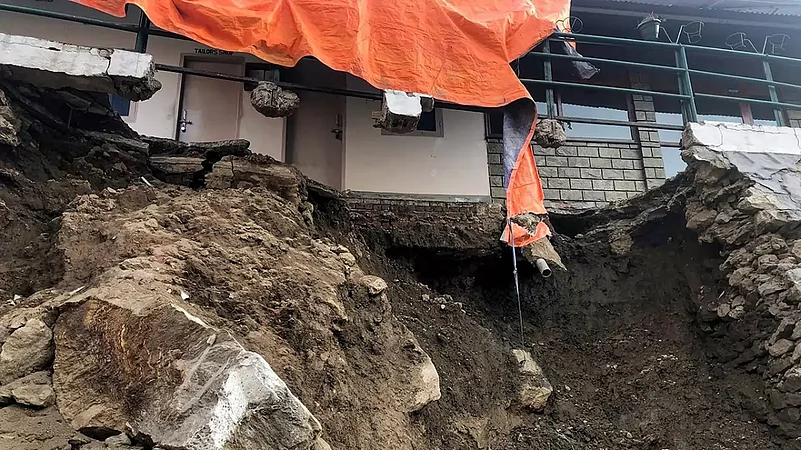As cracks develop in Uttarakhand's Joshimath and it turns into a sinking town, environmentalist Chandi Prasad Bhatt on Monday said the disaster is a result of government's apathy to repeated warnings earlier.
Geological factors apart, Bhatt said the failure of successive governments to act on the warnings by experts about possible hazards in Joshimath and adjoining areas has emerged as a major reason behind the land subsidence crisis that has now gripped the town.
Bhatt, also associated with the Chipko Movement, also said that while the Uttarakhand government has now initiated a scientific study of Joshimath with the help of satellite imagery, a detailed zonation mapping of the Himalayas in Uttarakhand and Himachal Pradesh, warning of the lurking dangers in Joshimath, had been submitted to the state government more than two decades ago.
Advertisement
The study was carried out using remote sensing and Geographic Information System (GIS) by around 12 leading scientific organisations of the country, including the National Remote Sensing Agency (NRSA), said Bhatt, adding that it was submitted to the Uttarakhand government way back in 2001.
The mapping of the area covering the entire Char Dham and Mansarovar yatra routes including Joshimath had also been submitted to the district administrations of Dehradun, Tehri, Uttarkashi, Pauri, Rudraprayag, Pithoragarh, Nainital, and Chamoli at that time.
In this zonation mapping report 124.54 sq km area of Joshimath had been divided into six parts in accordance with their susceptibility to landslides, Bhatt said, adding that over 99 per cent of the mapped area had been shown as landslide-prone in varying degrees and 39 per cent of the area was identified as a high-risk zone, 28 per cent as a moderate-risk zone and 29 per cent as a low-risk zone and the rest in the lowest.
Advertisement
Subsequently, a daylong meeting was also held between senior administrative officials, experts, people's representatives and social workers in Dehradun over the study in which the district magistrates concerned had agreed to take the required safety measures in light of the study.
However, nothing was done and the state government had to face a lot of criticism for not acting on the study in the wake of the 2013 Kedarnath disaster -- the ‘Himalayan tsunami’ which killed more than 4,000 people, said Bhatt.
He said, "Failure of successive governments to act on expert warnings seems to be at the root of the Joshimath crisis. One study after another would not help until the governments begin to act on what they were recommended", the nonagenarian on whose request to the state government, the then ISRO Chairman K Kasturirangan constituted a group of organisations headed by NRSA to do zonation mapping of the region.
"Once again the problem is being ignored in the name of conducting studies. The NRSA's landslide hazard zonation mapping submitted in 2001 and the 1976 report of the Mishra Committee of which I too was a part contain enough suggestions about the safety measures to be adopted to save towns like Joshimath and their residents. What is needed is action, not just another study."
(With PTI inputs)




















